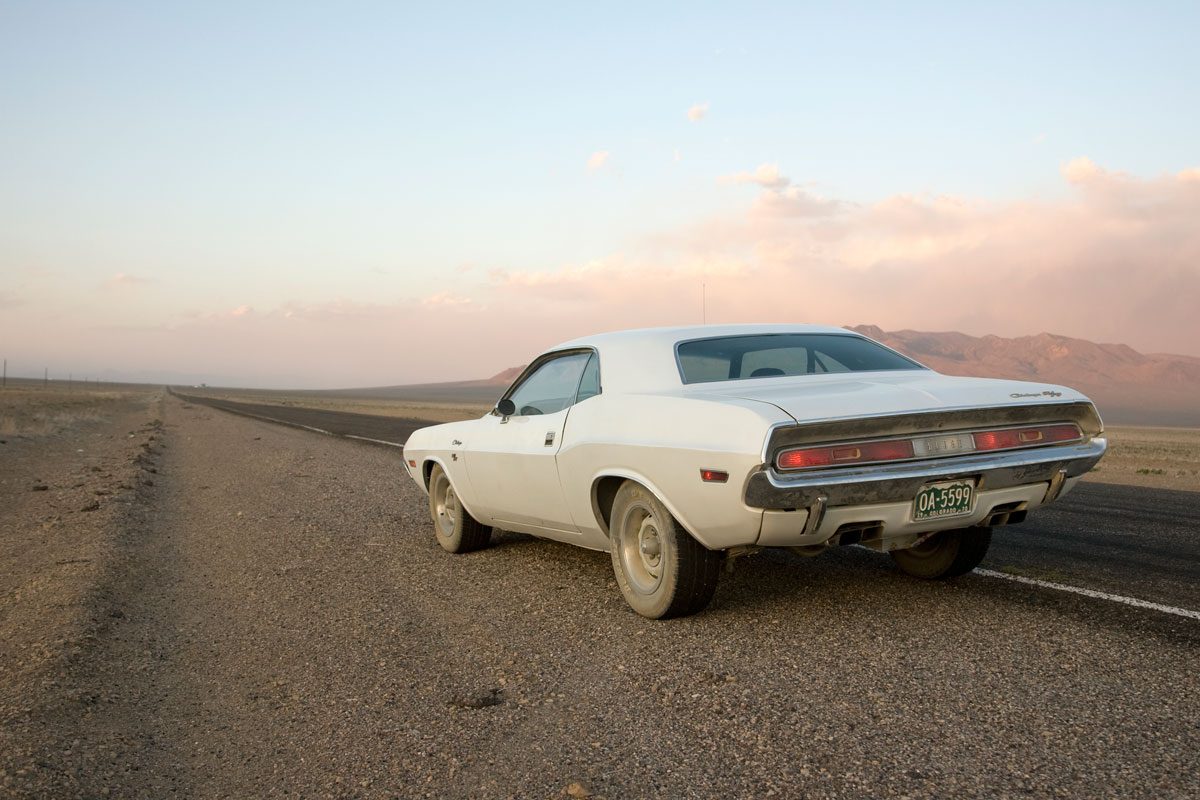Vanishing Point

Richard C Sarafian
USA – 1971

Screenplay: Guillermo Cabrera Infante, Barry Hall
Cinematography: John A. Alonzo
Production: Cupid Productions
Language: English
Duration: 99 min
Color: Color
Synopsis: Kowalski works for a car delivery service. His job getting a 1970 Dodge Challenger from Colorado to San Francisco turns into a bet that he can make the trip in less than fifteen hours. After a few run-ins with motorcycle cops, the highway patrol launches an operation to bring the speeding law-breaker into custody. Along the way, Kowalski’s car radio remains tuned to the KOW station from where Super Soul, a blind show host equipped with a police radio scanner, uses the airwaves to communicate with our rebel without a cause. Following countless chase scenes, gay hitchhikers, a naked woman riding a motorbike, lots of Benzene and Benzedrine, the last American hero’s ride finally catches up to the opening of the film in a glorious fireball of muscle and motor parts.
Notes:
Vanishing Point is clearly a film that responds to the collapse of Eisenhower-era certainties and is in many ways a typical post-Easy Rider collision of Roger Corman youth exploitation movie and film school nouvelle vague-influenced New Hollywood, undoubtedly part of the studios’ scramble to capitalize on Dennis Hopper and Peter Fonda’s crossover success. The film combines the familiar stock characteristics of many such movies, including a disaffected protagonist, automotive destruction, drug taking, hippies, bigoted police officers and small-town thugs, a tone of inchoate profundity, desert landscapes, and a rock sound track. It would, however, be a mistake to write off the film as little more than a cash-in. While Easy Rider is an obvious development of the more explicitly “wild” biker and racing movies that preceded it, that film’s distinctiveness and influence lay in its unapologetic combination of countercultural cheese and verité politics. For its part, Vanishing Point does utilize a hybrid form to great effect but it also manages, largely due to its resolute minimalism, to avoid some of the hippie sentimentalism to which Easy Rider falls prey.
The productive tension between highbrow and no-brow that produced, for a brief historical moment, the figure of the revolutionary grease monkey, is most fully realized in Vanishing Point’s deadpan driver Kowalski. A similar combination was used, with varying degrees of success, by directors as different as Michelangelo Antonioni (in the ponderous but optically brilliant Zabriskie Point [1970]), James William Guercio (in the reverse Easy Rider cop drama Electra Glide in Blue [1973]), and, most memorably, perhaps, Monte Hellman, whose Two-Lane Blacktop (1971) represents, along with Vanishing Point, the crystallization of the genre’s potency and is, incidentally, another beneficiary of the recent reappraisal of New Hollywood films, shown in a new print at Cannes in 2005. But it is Vanishing Point, I believe, that generates the most heat from its synthesis of arthouse and exploitation film, and this is because it so reflexively focuses on the politics of speed that is at the heart of the genre of the road movie.
Excerpt from Beck, Jhon. “Resistance Becomes Ballistic: Vanishing Point and the End of the Road.” Cultural Politics (Bloomsbury Publishers) 3, no. 1 (March 2007): 35-50.


